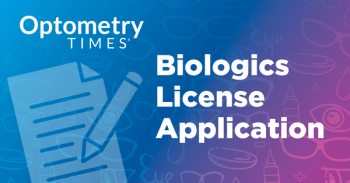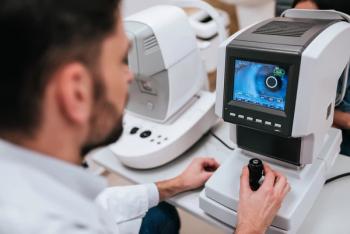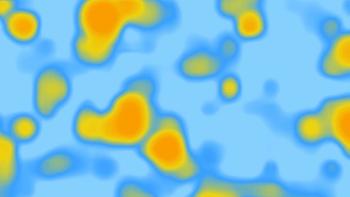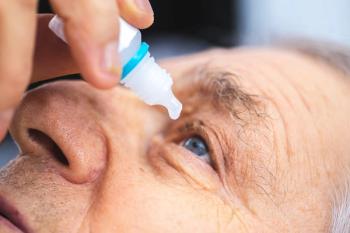
Harrow announces data at week 52 from ESSENCE-2 open-label extension study
The study demonstrated sustained safety and efficacy of cyclosporine ophthalmic solution (Vevye) 0.1%, with many patients now entering their sixth refill cycle, according to the company.
Harrow announced results from its ESSENCE 2 open-label extension (OLE) clinical study for cyclosporine ophthalmic solution (Vevye) 0.1% to treat the signs and symptoms of dry eye disease (DED).
According to a news release, ESSENCE-2 OLE was a Phase 3, prospective, multicenter, open-label, clinical study with 202 patients, who had previously completed the ESSENCE 2 study, receiving cyclosporine ophthalmic solution in each eye twice a day for 52 weeks.1
The 1-year study results were published recently in Cornea.2 They demonstrated the solution’s sustained safety and efficacy in treating the signs and symptoms of DED, underscoring its value in managing this chronic condition.
Mark L. Baum, chairman and CEO of Harrow, noted in the news release that the OLE data affirms cyclosporine ophthalmic solution’s efficacy and safety and why so many patients are now entering their sixth refill cycle. He noted some key features and benefits of the solution.
“Vevye is preservative-free, has no pH or osmolarity, and requires only twice daily dosing with an individual dosage that is 1/10th the size of conventional eye drops,” he said in the news release. “In addition, in a pre-clinical ex-vivo corneal penetration study,3 Veye’s semi-fluorinated alkane vehicle, perfluorobutylpentane (PFBP), delivered approximately 22 times more cyclosporine into the cornea compared to Restasis.”
Key findings1 of the study include:
- Statistically significant improvements in all prespecified efficacy endpoints compared with baseline at each visit.
- Corneal staining improvements were early and stabilized over time while tear production improved continuously and symptomatology improvement followed these effects.
- The most common ocular treatment-related adverse events were mild instillation site pain in 13 patients (6.5%) and reduced visual acuity in 6 patients (3.0%). One patient withdrew during the 52-week study due to an ocular adverse event (mild burning/stinging).
- On a 0 to 10 scale (the higher the number equating to a better rating), when patients were asked to rate the question, “How satisfied are you with the study eye drop?”— 33.1% of patients provided the highest possible rating of 10. Approximately 91% of patients rated a score of 5 or higher, indicating satisfaction with the treatment.
- Investigators conclude that water-free cyclosporine 0.1% ophthalmic solution was safe and well tolerated during long-term use.
John D. Sheppard, MD, an ophthalmologist and president of Virginia Eye Consultants, and one of the investigators on the ESSENCE 2 OLE study, lauded the study’s results.
“Topical cyclosporine has established a remarkable decades-long efficacy and safety profile,” he said in the news release. “Finally, we have the right vehicle.”
Laura M. Periman, MD, an ophthalmologist and director of Dry Eye Services and Clinical Research at Periman Eye Institute, pointed out that tolerability has long been an issue with long-term immunomodulatory medications leading to poor patient compliance and dropout.
"In this 52-week study, perhaps the most impressive data point was that only one patient stopped using VEVYE because of an ocular adverse event, which was mild burning and stinging,” she said. “Also, patients randomized to VEVYE in ESSENCE-2 that continued into the OLE, on average, saw their natural tear production nearly double after 56 weeks of treatment from baseline. Furthermore, these patients saw a statistically significant improvement in all measured symptoms at all measured time points compared to baseline. ESSENCE-2 OLE data demonstrates the long-term potential of VEVYE for patients suffering from chronic dry eye disease.”
References:
Harrow Announces 52-Week Data from VEVYE® ESSENCE-2 Open-Label Extension Study.https://www.businesswire.com/news/home/20240605338632/en/Harrow-Announces-52-Week-Data-from-VEVYE. Accessed June 5, 2024.
Wirta DL, Galor A, Aune CA, et al. Long-Term Safety and Efficacy of a Water-Free Cyclosporine 0.1% Ophthalmic Solution for Treatment of Dry Eye Disease: ESSENCE-2 OLE. Cornea. Published online May 13, 2022:10.1097/ICO.0000000000003567. doi:https://doi.org/10.1097/ICO.0000000000003567
Data on file. RESTASIS is not a Harrow-owned brand, and the RESTASIS trademark is the property of its respective owner.
Newsletter
Want more insights like this? Subscribe to Optometry Times and get clinical pearls and practice tips delivered straight to your inbox.








































